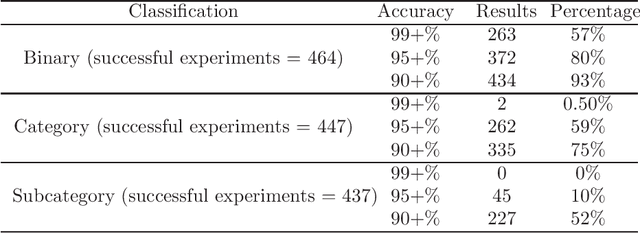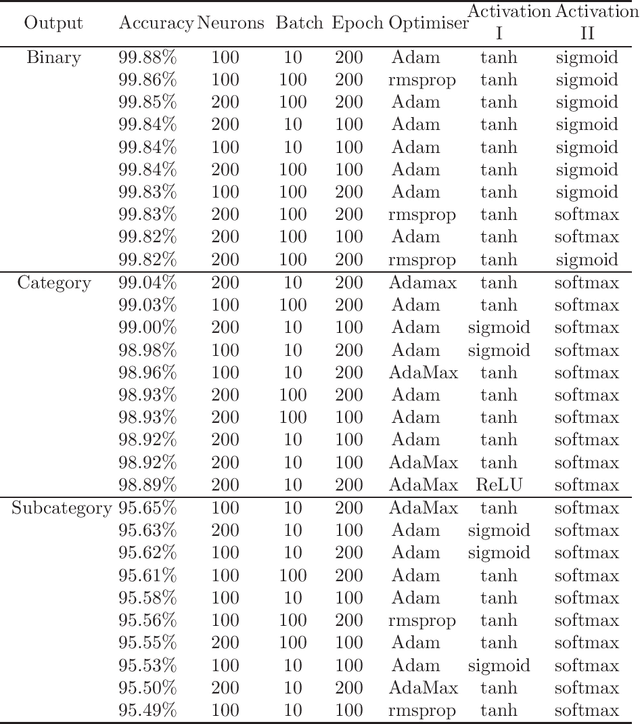Shaleeza Sohail
Keep It Simple: Fault Tolerance Evaluation of Federated Learning with Unreliable Clients
May 16, 2023Abstract:Federated learning (FL), as an emerging artificial intelligence (AI) approach, enables decentralized model training across multiple devices without exposing their local training data. FL has been increasingly gaining popularity in both academia and industry. While research works have been proposed to improve the fault tolerance of FL, the real impact of unreliable devices (e.g., dropping out, misconfiguration, poor data quality) in real-world applications is not fully investigated. We carefully chose two representative, real-world classification problems with a limited numbers of clients to better analyze FL fault tolerance. Contrary to the intuition, simple FL algorithms can perform surprisingly well in the presence of unreliable clients.
Explainable and Optimally Configured Artificial Neural Networks for Attack Detection in Smart Homes
May 17, 2022



Abstract:In recent years cybersecurity has become a major concern in adaptation of smart applications. Specially, in smart homes where a large number of IoT devices are used having a secure and trusted mechanisms can provide peace of mind for users. Accurate detection of cyber attacks is crucial, however precise identification of the type of attacks plays a huge role if devising the countermeasure for protecting the system. Artificial Neural Networks (ANN) have provided promising results for detecting any security attacks for smart applications. However, due to complex nature of the model used for this technique it is not easy for normal users to trust ANN based security solutions. Also, selection of right hyperparameters for ANN architecture plays a crucial role in the accurate detection of security attacks, especially when it come to identifying the subcategories of attacks. In this paper, we propose a model that considers both the issues of explainability of ANN model and the hyperparameter selection for this approach to be easily trusted and adapted by users of smart home applications. Also, our approach considers a subset of the dataset for optimal selection of hyperparamters to reduce the overhead of the process of ANN architecture design. Distinctively this paper focuses on configuration, performance and evaluation of ANN architecture for identification of five categorical attacks and nine subcategorical attacks. Using a very recent IoT dataset our approach showed high performance for intrusion detection with 99.9%, 99.7%, and 97.7% accuracy for Binary, Category, and Subcategory level classification of attacks.
 Add to Chrome
Add to Chrome Add to Firefox
Add to Firefox Add to Edge
Add to Edge